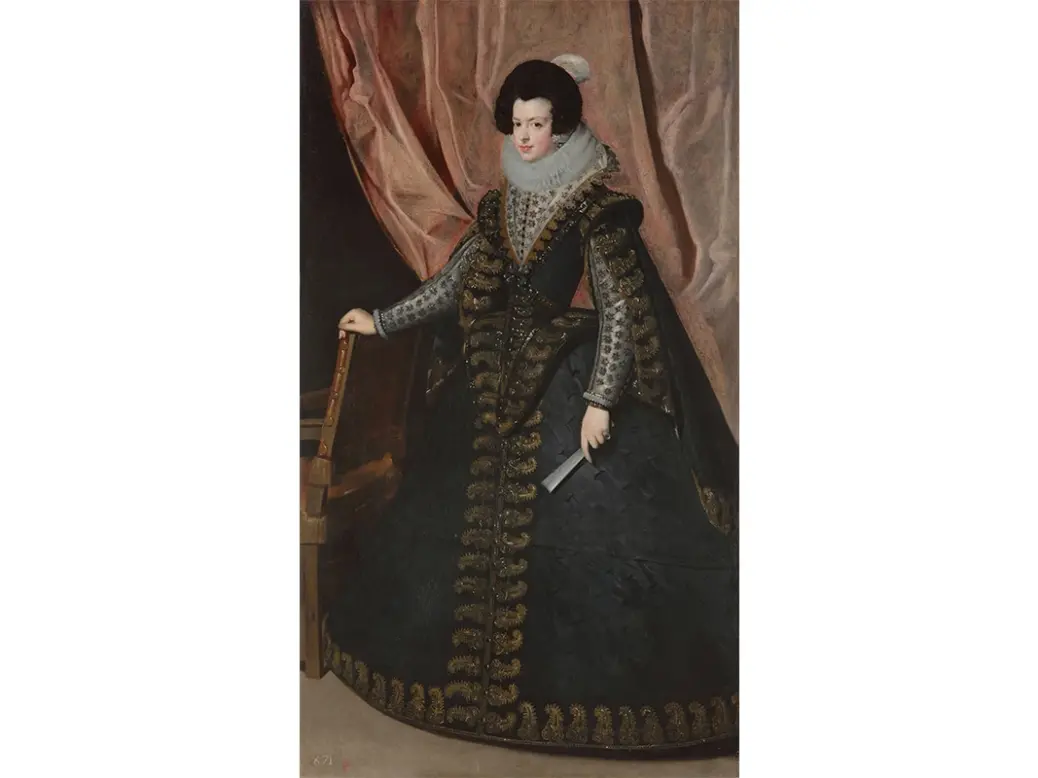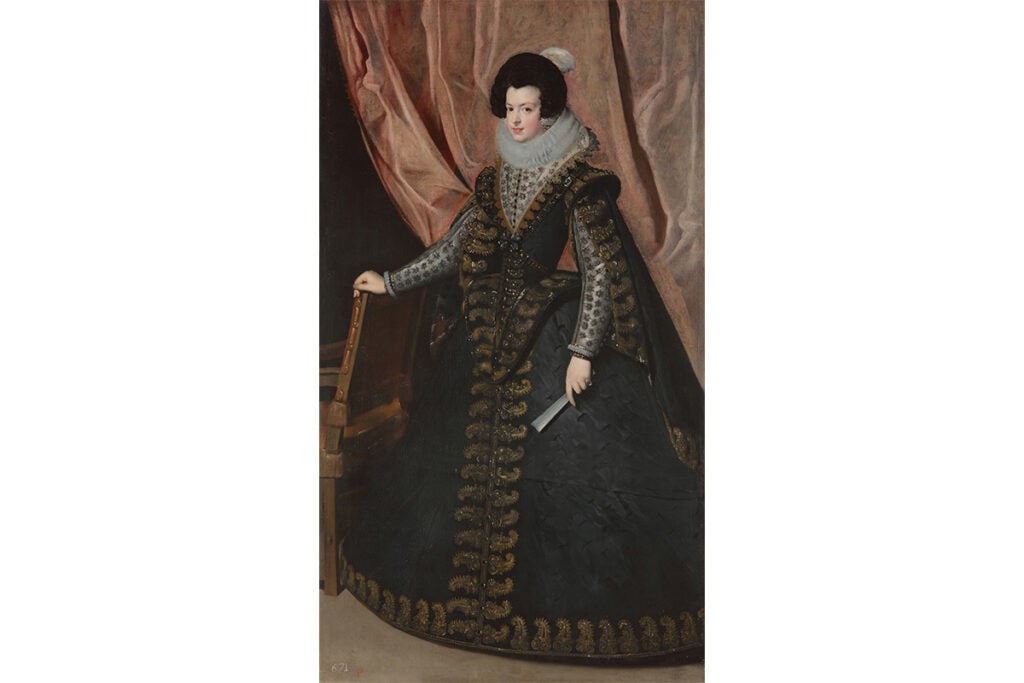
An ‘exceptional’ 17th-century portrait by celebrated Spanish artist Diego Velázquez has the potential to ‘ignite the market’ and break auction records, according to experts.
The full-length portrait of Isabel de Borbón, queen of Spain, has been unveiled this week at Sotheby’s New Bond Street Galleries in London ahead of the sale at Sotheby’s New York on 1 February 2024.
The painting has been hailed ‘one of the most valuable Old Masters to ever come to market’ and is expected to fetch in the region of $35 million, more than double the current $16.9 million record for the sale of a Velázquez. The price tag reflects the painting’s impeccable provenance and rarity of the artist’s court portraiture on the public market.
‘Velazquez is one of the few Old Masters who has the potential to truly ignite the market,’ explains Richard Bagnall-Smith, co-founder of leading art advisory Cadell & Co. ‘His paintings are among the most visited and shared in museums, from the Rokeby Venus at the National Gallery to Juan de Pareja (1650) at the Met in New York. That work sold at auction famously in 1970 and set the record price for any work of art ever sold. This example to be offered by Sotheby’s is of a similar calibre.’
A popular queen at the height of her powers

Known until marriage as Élisabeth de France, Isabel was the daughter of Henri IV of France and his second wife, Marie de Médicis. Her marriage to Philip IV of Spain (Philip III of Portugal) was an astute political match; one that shored up the relationship between two European power-players. As Philip’s first wife, Isabel de Borbón reigned as Queen of Spain from 1621 until her death in 1644, and Queen of Portugal from 1621 to 1640. She was beloved and respected for her quick wit, intelligence and generous spirit.
[See also: the most outstanding art advisers for ultra-high-net-worth individuals]
This admiration is reflected in Velázquez’s towering 2 metre-tall portrait. The sitter is depicted with an imposing stance, confident expression and opulent dress. A queen at the height of her powers, immortalised by an artist at the height of his own.
‘This exceptional painting is remarkable not just for its beauty and quality, but also for its scale and subject matter,’ explains George Wachter, Sotheby’s chairman and co-worldwide head of Old Master paintings. ‘Royal portraiture allowed Velázquez to push forward art in new and revolutionary ways and this grand portrayal of Isabel de Borbón is an exceptional example of the artist at the height of his powers, shaping the direction of portraiture for generations to follow. No other Velázquez paintings of this scale and importance have come to the market in more than half a century.’
Velázquez at a moment of transformation
Isabel de Borbón and Philip IV were both painted by Velázquez in the 1620s. The works hung together at Madrid’s Buen Retiro Palace. (Velázquez’s Philip IV in Black, is now at the Museo del Prado).
Velázquez revisited the portrait in the 1630s, reworking various aspects, including visible changes to the skirt. It is understood this revision was prompted by the artist’s recent encounter with Sir Peter Paul Rubens, then regarded as the greatest artist of the time, and still today a giant among painters.
[See also: The top art finance advisers for high-net-worth individuals]
Christopher Apostle, Sotheby’s international head of Old Master paintings, explains: ‘Though Velázquez was already widely celebrated when he painted this work, here we see him at a moment of transformation. He had already been crowned official painter to the Spanish King, but in 1628, he met, for the first time, Sir Peter Paul Rubens, whose confidence with the brush, and whose fluid style Velázquez quickly adapted, making of them something entirely his own, and – in the process – taking the art of royal portraiture to the next level.’
The portraits of Isabel and Philip ‘disappeared’ during Napoleon’s invasion of Spain and reemerged in France where they were displayed in King Louis Philippe’s Galerie Espagnole at the Louvre until the king’s fall from power in 1838. The portrait of Isabel de Borbón was then sold to merchant banker and noted book collector Henry Huth, who hung it at Wykehurst Park in Sussex, and in whose family it remained until it was sold in 1950 – the last time it was on the public auction market. It has been in the collection of its current owners since 1978.
Attracting buyers from across the art market
The Sotheby’s portrait is of such extraordinary provenance and calibre that it will likely attract buyers from outside the traditional Old Masters market, according to Bagnall-Smith.
‘There is a significant chance that a buyer from a different field – such as the Impressionist or Modern field – would also be interested as this artist is such an important name in the overall field of art history,’ he explains. ‘Velázquez’s influence is tangible in works by Francis Bacon for example and many, many other artists’ output over time.’
[See also: Sale of Rothschild treasures soars above estimates at first of-its-kind auction]
The timing of the Sotheby’s sale is key, notes Bagnall-Smith, as it will preempt a ‘complex year’ for the art market as it responds to political uncertainty.
Reflecting on the outlook for the art market over the next 12 months, he added: ‘We don’t expect to see growth, but there have been consistent results across 2023 and, where works of art are estimated sensibly, with strong data behind the pricing, and presented well to the market, we have seen sales remaining steady.
‘We predict the auction houses will curate their sales and price them carefully, offsetting risk to third party collectors in their major sales seasons. The US and European elections may have some effect with the ongoing disrupted political environment and conflict is a factor around confidence. However the statistics show that there are still new buyers coming to the market, that collectors in Asia continue to have appetite so we are cautiously optimistic about a steady state.






